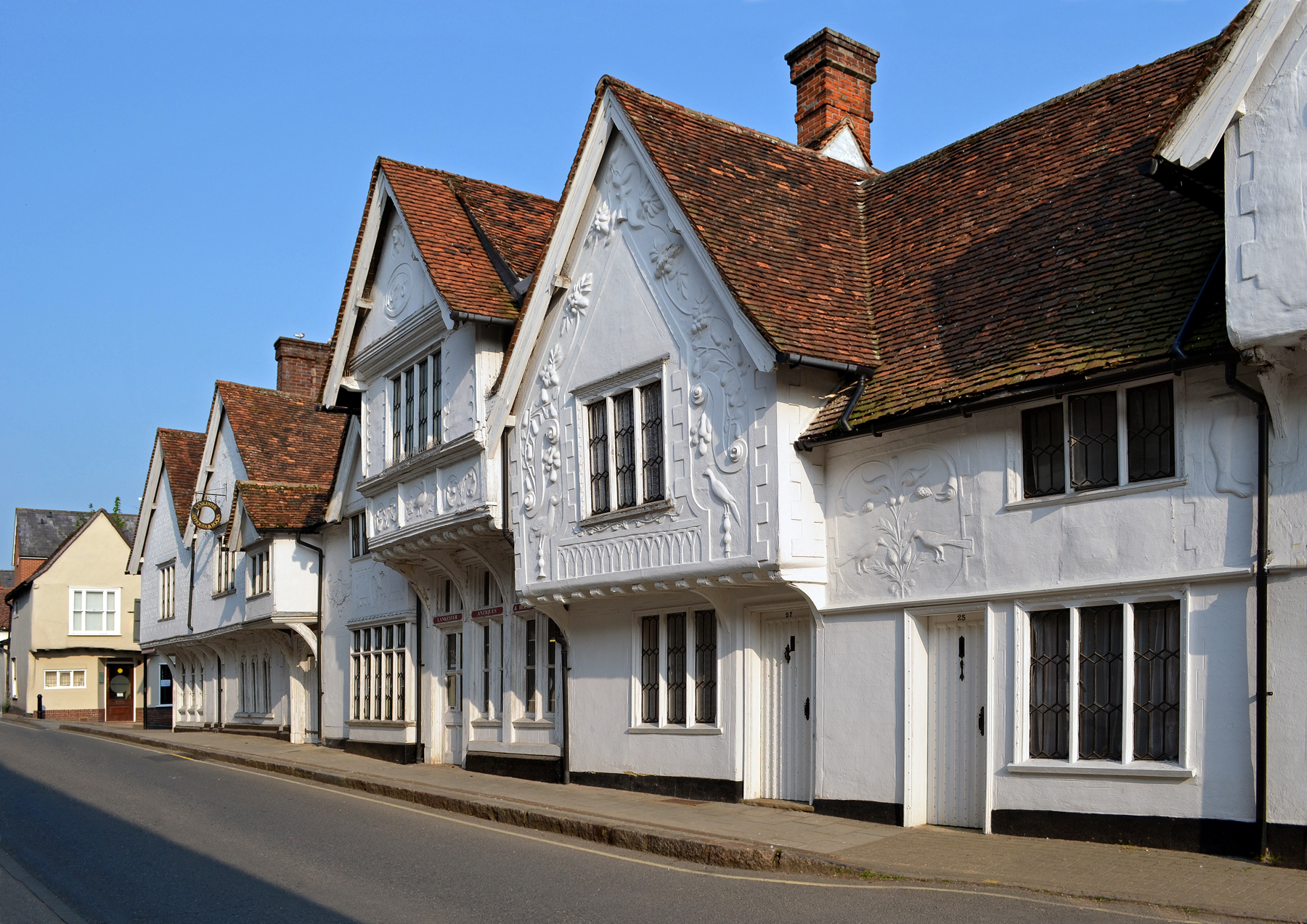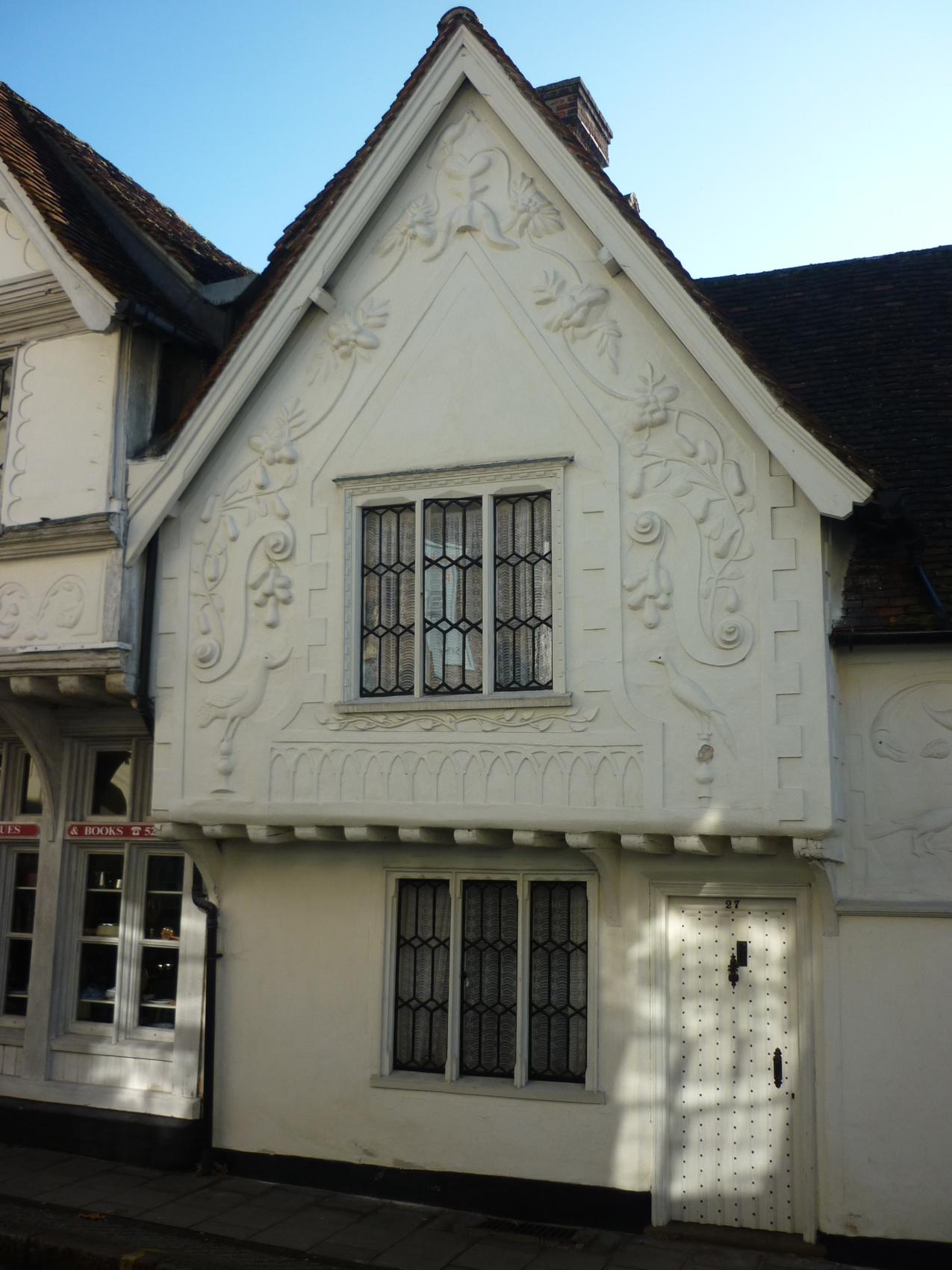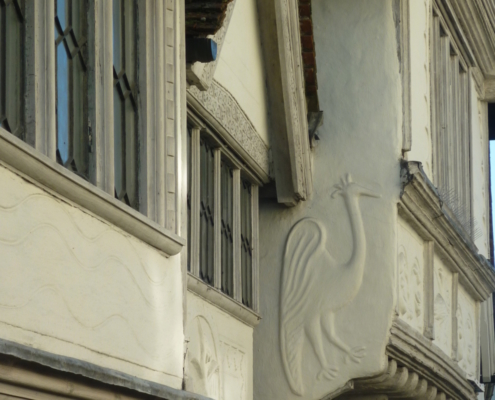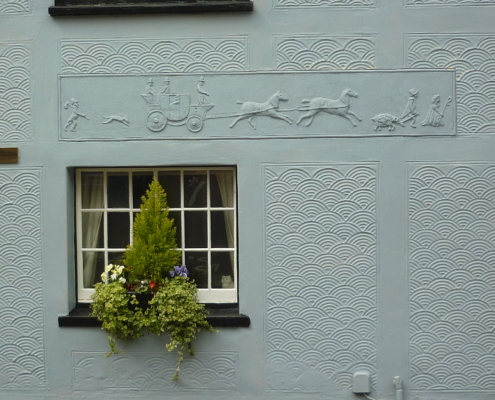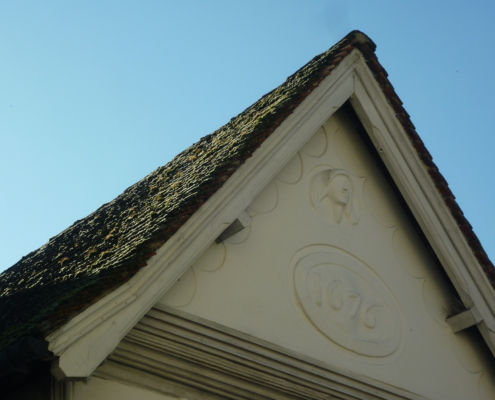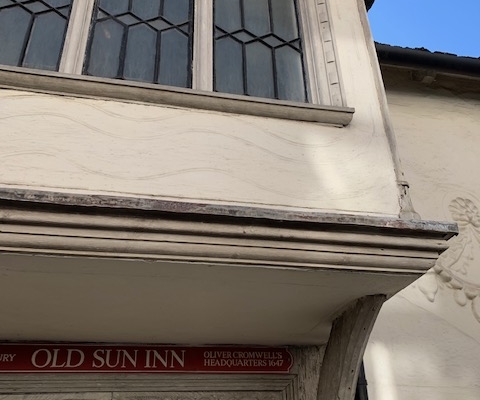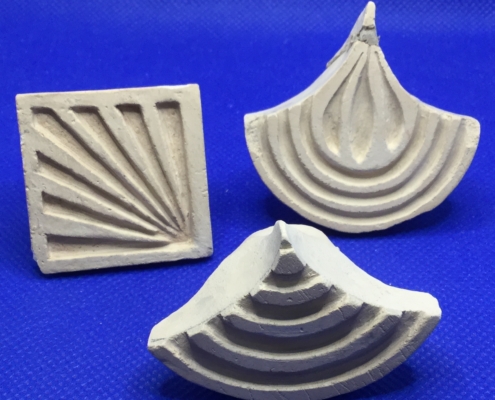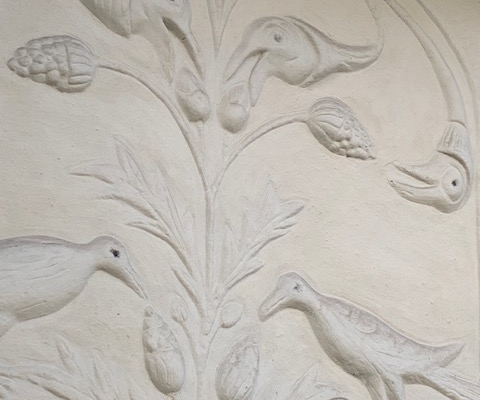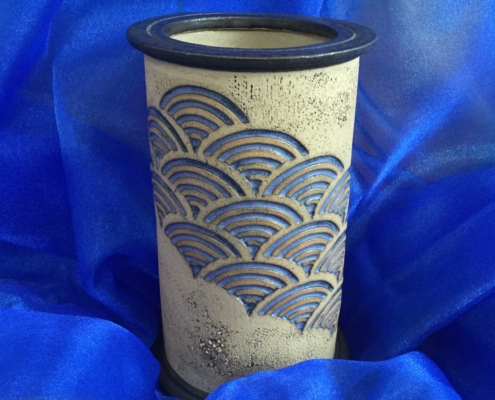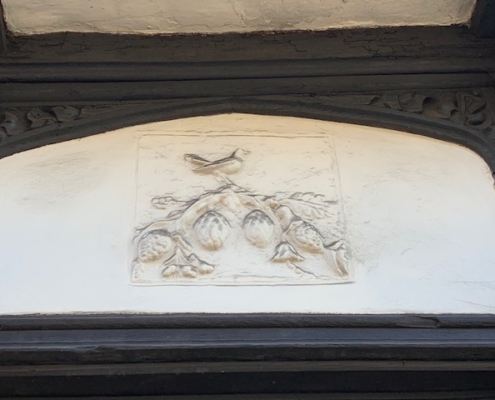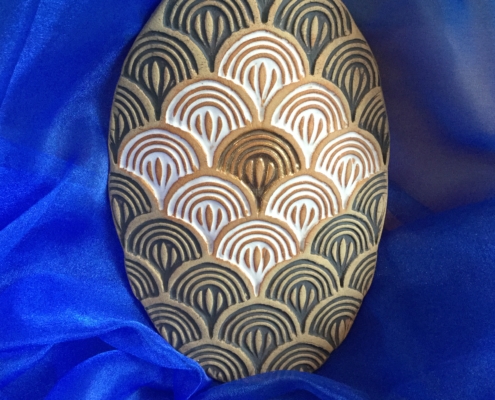Pargeting is mainly associated with East Anglia and, in particular, with Essex and Suffolk. It is believed to have been introduced to England in the 16th century by Henry VIII, who imported Italian plasterers to decorate Nonsuch Palace. The craft was referred to as ‘stucco’ in Italy, but became known as ‘pargeting’ in England.
Initially, patterns were stamped or scratched into the surface of wet plaster, but the most skilled pargeters came to create their own designs which they then modelled directly onto the wall using their fingers and spatula to create designs in high relief. Pargeting can be found in a number of finishes and is not restricted to lime plaster, although this is the most common. Repeat decorative patterns were often made with wooden home-made stamps. The finest pargeting is hand-modelled bas-relief motifs like coats of arms, fruits, animals and green men etc.
Pargeting is most frequently seen on the outside of houses, particularly in areas where there is no good building stone. It is most commonly found on timber-framed properties which are more prone to fire damage than brick or stone built ones, although it was not necessarily a substitute. It can also be found indoors on overmantels and ceilings.
Pargeting dropped out of fashion after Elizabeth’s I’s reign, became popular again during the Jacobite period, Victorian era, Arts and Crafts period, and has become very popular again in the last 20 to 30 years.
For some fabulous pargeting-related gifts, do check out Rockwell Pottery on our e-shop.

